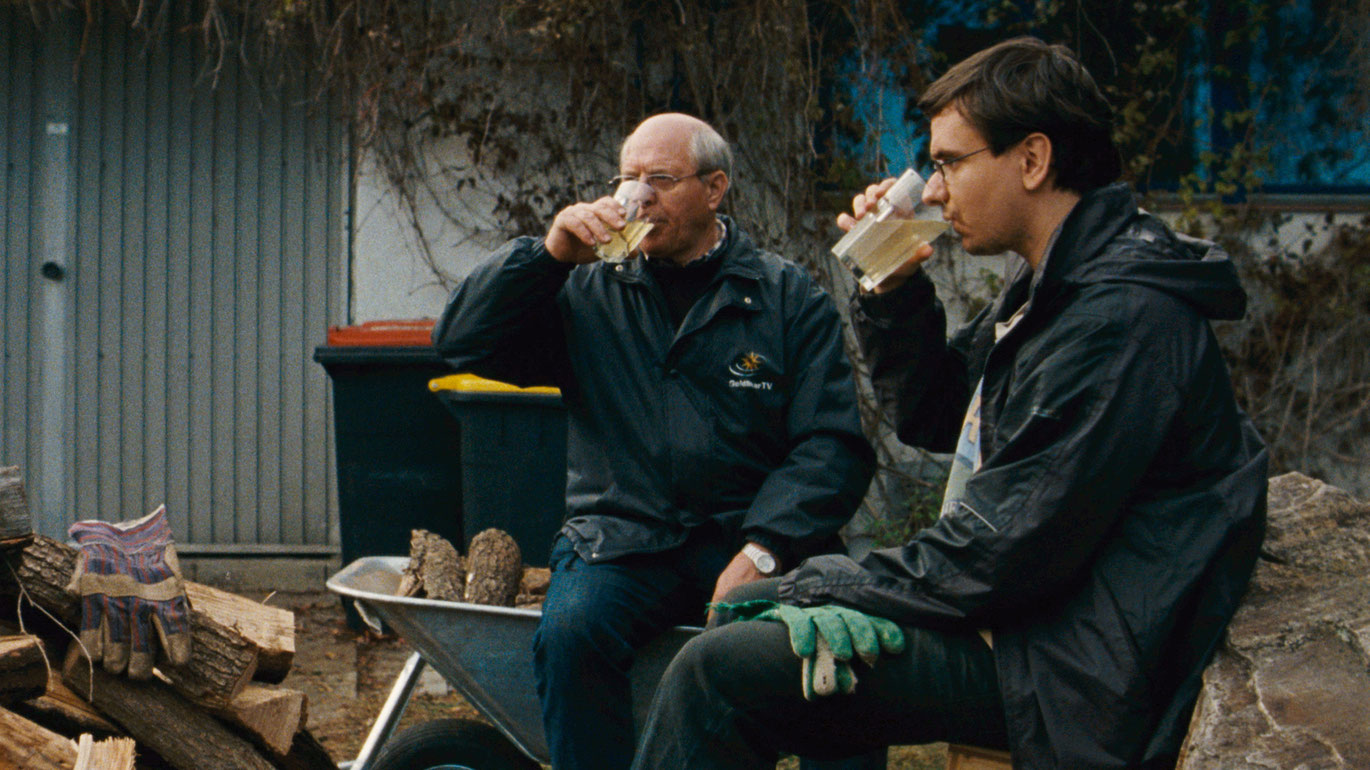Bringing In the Wood
A son visits his father to help with wood-work. During their work and conversations there is some kind of distance between them to which they got used to during the years. Later the son misses his bus so they have to spend the evening together. (prod. note)
Bringing In the Wood, carried by a concise pictorial language and exact dramaturgy, condenses partial aspects of discrepancies between the generations to a precise staging and character study. A student living in Vienna visits his father to help him with the annual wood delivery. The father first proudly shows him the new heating equipment in the cellar of the house. Meters of wood are then loaded off the back of a truck. They have to be piled up log by log in the wood cellar.
Without rebelling against the entrenched, apparently unalterable family fabric, the son obeys his father’s orders. The chance for more in-depth conversation during a break is not taken. Despite the noticeable effort, their dialogue remains superficial and trivial. Only rarely is a genuine interest in one another shown; the father’s incessant complaints and egoistic call for help imply a considerable disdain for student life and his son’s needs. Although these roles seem to have become unstable in the meantime, the collision of two different value systems is unmistakable at all times.
The precise character drawing of the obedient, at times indifferent son and his demanding father translates into a plain and trenchant formal language. With the help of minimal cuts and perseverance in long takes, Bringing In the Wood offers also a visual representation of its atmosphere of arduousness and resignation. The son misses the last bus and in the end has to stay overnight at his parent’s house. He goes to bed early. His father, on the contrary, returns to his everyday routine and spends a bit of time in front of the television.
(Matthias K. Heschl)
(Translation: Lisa Rosenblatt)
Holz einräumen
2014
Austria
17 min


